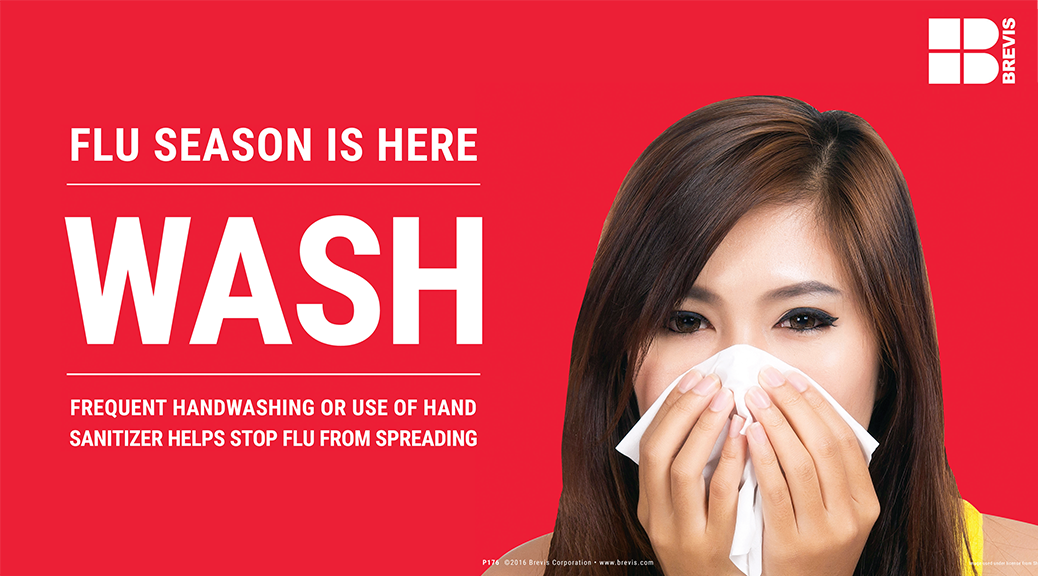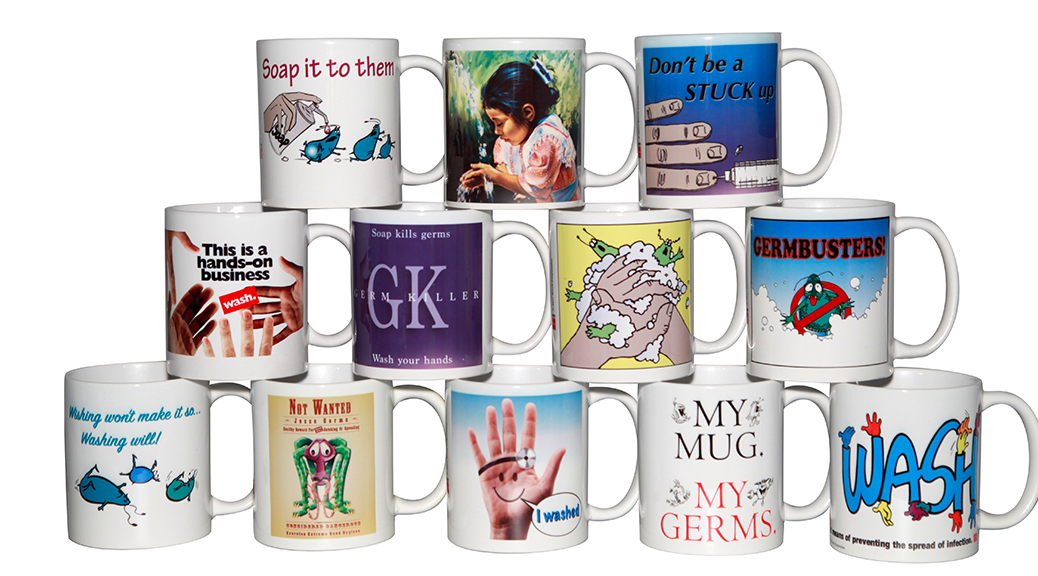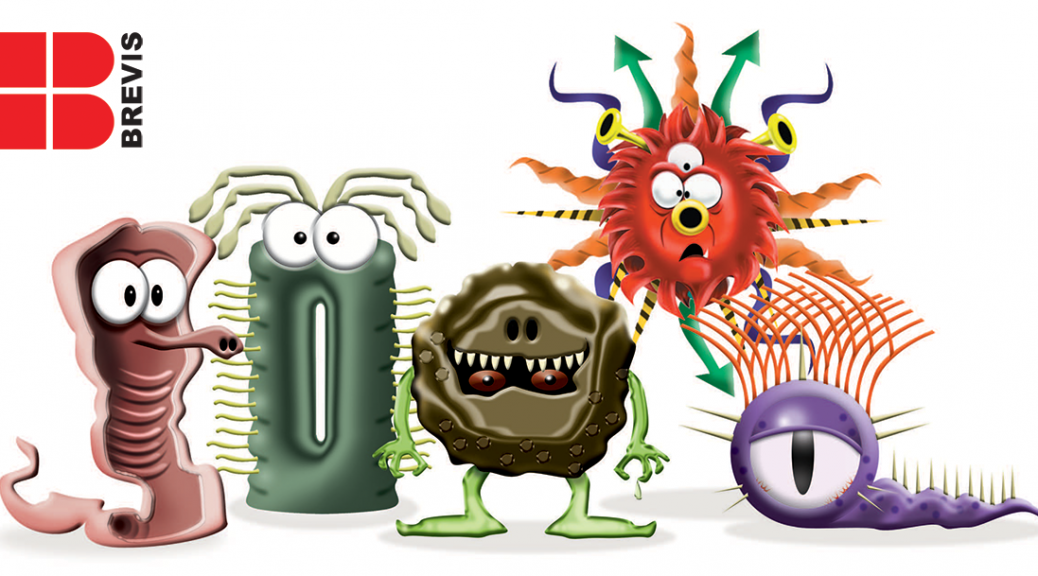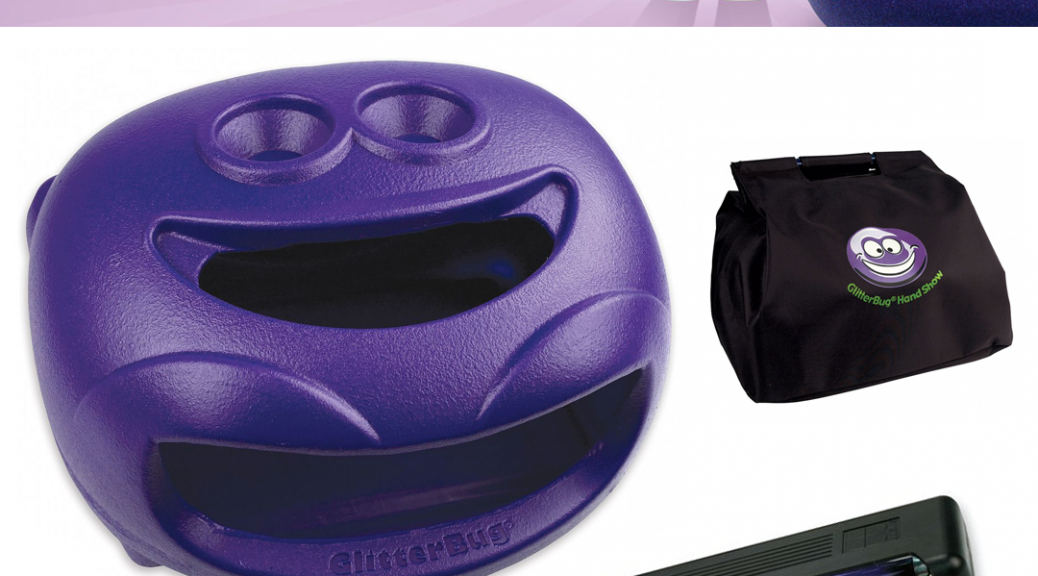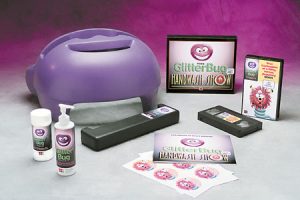The flu is making headlines again this year. It seems that the flu virus is widespread in at least 46 states already causing tremendous woe and suffering. As always proper hand hygiene and getting vaccinated should top your list of defense strategies. Remind yourself and those around you to wash hands frequently with strategically placed Flu Posters from Brevis.
Handwashing Mug Assortment Special
Just in time for the Holidays – the special Brevis Handwashing Mug Holiday Pack. This price will make Santa Blush. Our regular price is $120, but today though the end of the year, they are only $84.
Hurry, this price will expire 12/31/2017!
Are you a man or a microbe?
We may think of ourselves as just human, but we’re really a mass of microorganisms housed in a human shell.
The human body contains about 100 trillion cells, but only about one in ten of those cells is actually…well…human. The rest are bacteria, viruses and other microorganisms that populate every nook and cranny of our human body. In fact, for every human gene in our bodies there are 360 microbial genes. Together, they are referred to as our microbiome, and they play such a crucial role in our lives that scientists like Michael Blaser of New York University (Director of the Human Microbiome Project) have begun to reconsider what it means to be human.
The microbiome is the human equivalent of an environmental ecosystem. Although the bacteria together weigh a mere three pounds, their composition determines a lot about how the body functions—and sometimes malfunctions. And just like ecosystems the world over, the human microbiome is losing its diversity, to the potential detriment of the health of those it inhabits. Namely, us.
Lita Proctor of the National Institutes of Health, who is also leading the Human Microbiome Project, says, “The human we see in the mirror is made up of more microbes than human. They belong in and on our bodies; they help support our health; they help digest our food and provide many kinds of protective mechanisms for human health.”
So these microbes aren’t just along for the ride, they’re there for a reason. We have a symbiotic relationship with them—we give them a place to live and they keep us alive.
In his new book, “Missing Microbes,” Dr. Blaser links the declining variety within the microbiome to our increased susceptibility to serious, often chronic conditions, from allergies and celiac disease to Type 1 diabetes and obesity. He and others primarily blame antibiotics for the connection. “We inherit every one of our genes, but we leave the womb without a single microbe,” says Blaser. “As we pass through our mother’s birth canal, we begin to attract entire colonies of bacteria. By the time a child can crawl, an enormous, unseen cloud of microorganisms—a hundred trillion or more, has blanketed him. They are bacteria, mostly, but also viruses and fungi (including a variety of yeasts), and they come at us from all directions: other people, food, furniture, clothing, cars, buildings, trees, pets, even the air we breathe.”
It seems taking too many antibiotics—not to mention our obsession with cleanliness—may disrupt the normal microbiome. The average American child is given nearly three courses of antibiotics in the first two years of life, and eight more during the next eight years. Even a short course of antibiotics like the widely prescribed Z-pack (azithromycin, taken for five days), can result in long-term shifts in the body’s microbial environment. It’s overkill—literally. Imprudent antibiotic use has resulted in widespread resistance among microbes and doctors now operate in a state of near panic as common infections demand increasingly powerful drugs for control.
Our bodies are made of trillions of microorganisms and they’re there for a reason. It seems we’re killing germs at our own peril. What’s your take?
A virus spreads in just 2 hours. Why the war on germs is in your hands.
Germs are everywhere. In optimal conditions a virus can divide every 20 minutes, spreading rapidly where they dwell. In fact, contamination of a single doorknob can lead to the spread of viruses throughout an office building or hotel in as little as two hours.
Researchers from the University of Arizona, Tucson, placed a tracer virus on commonly touched objects such as a doorknob or tabletop. At multiple time intervals (from two-to-eight hours) the researchers sampled a range of surfaces including light switches, bed rails, countertops, sink tap handles, and push buttons. And guess what? Nearly 60 percent of the surfaces were contaminated within two-to-four hours.
“If we placed a tracer virus on the push plate to an office building, it ended up on almost 50 percent of the high-touch surfaces of officer workers’ hands within four hours,” says study author and microbiologist Charles Gerba, PhD. “In the case of the hotel, we placed the virus on the nightstand in one room, and it was spread to the next four rooms by the maid during cleaning.” Also, the first item to become contaminated in the workplace was the coffee pot handle. Other contamination hot spots are phones, computers, and desktops.
Of course, our own bodies play host to around 100 trillion microbes that together weigh more than two pounds. They are present on our skin, in our guts, in the crooks of our elbows, and just about everywhere else. Your immune system protects against most microorganisms, but there are hundreds of thousands of different kinds of germs, and some of them are good at mutating into things your body doesn’t recognize. And they make you sick.
To get an idea of just how many microbes we carry—and which ones spread fastest—researchers are even testing our most intimate possessions: our cell phones. In a small study, University of Oregon scientists tested the index fingers and thumbs of 17 subjects, along with the touchscreens of their smartphones. As you might expect, they found an 82 percent overlap between the most common types of bacteria found on participants’ fingers and on their phones.
So your cell phone is covered with a personal bacterium cocktail? Clean it with a soft cloth dampened with water and wipe it down, or use a disposable wipe made specifically for cleaning electronic screens. Use a cotton swab to get the dirt and grime out of small nooks in the phone. The same goes for all of your other gadgets, too, including remote controls, headphones and ear buds, your computer keyboard, mouse, and tablet screen.
Yes, the war on germs is in your hands. Handwashing is the number one way to prevent the spread of germs and illness. Just make sure you’re doing it right. Friction (especially between the fingers) and duration—20 seconds with running water—are both important. And anything your hands touch are carriers. Learn all about handwashing here.
Here’s something else to think about: On average, an office desk has 400 times more bacteria than a toilet seat. It’s not surprising; the toilet is cleaned regularly. And remote controls, computer keyboards, phones, and iPods get touched way more than the toilet. Multiple coworkers and guest also share them—yet they are cleaned less often. You can find component-specific cleaning supplies at electronics stores. However, most disinfecting wipes are safe for electronics—just make sure to read the label before using them.
This one seems obvious, but how often do you walk around your home or office and wipe off doorknobs, cabinet handles, and light switches? You really should give them a once-over using disinfecting wipes—and don’t use the same wipe for more than a few places before grabbing a fresh one.
It’s easy to keep things clean. Soap and water. Bleach and water. Disinfecting wipes. Common sense. With these simple weapons, the battle against germs can be won. But the first step is you. Now go wash your hands!
Flu Posters
GlitterBug® Disclosure Center Kit 27% Off
Save $36. Now only $99!
It doesn’t happen very often but our bean-counter says we ordered too many of this item. So please help us make the accountant happy by taking advantage of this uncommon opportunity to own the popular and stylish GBX at an unheard of price.
For a limited time only buy this GBX Disclosure Center for $36 off our original price – only $99.00 plus shipping.
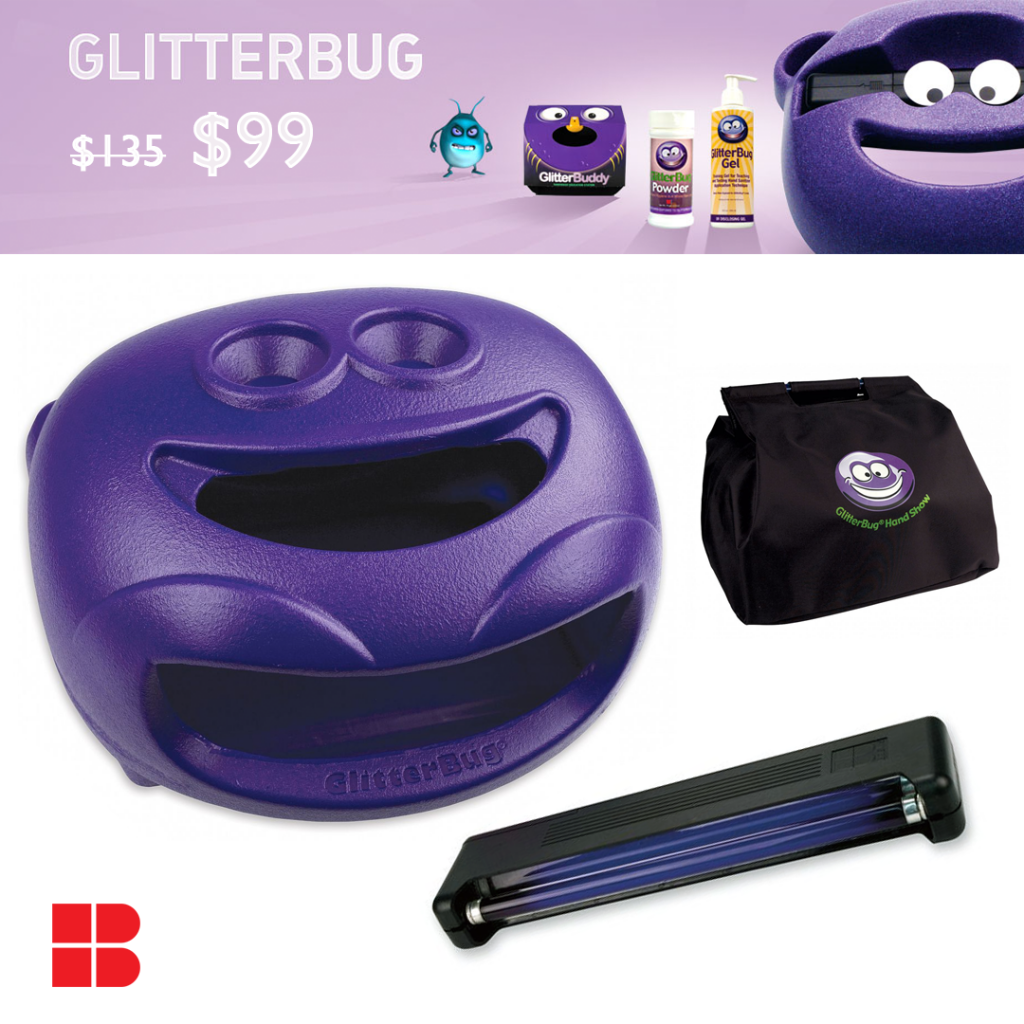
The GBX Disclosure Center comes complete with the GlowBar UVA battery operated lamp and the GBX Carry Bag. Also includes power adapter and batteries for the GlowBar.
View Glitterbug Kit
International Infection Prevention Week 2017 – Save 10%
Infection Prevention Awareness Week is once again upon us. Spice up your event with these new mugs from Brevis or any other product on Brevis.com. These mugs are sublimation printed for full color glory.
Save 10% On All Orders
Through October 2017 with promo code: IPW
Hand-Washing Dance Viral Video
Hand washing dance Indonesia 🙂
Hand washing dance, from Indonesia
Posted by DrKnowledge on Saturday, August 19, 2017
Just in time for the back-to-school season, a group called Dr. Knowledge has released a video on Facebook about handwashing. Aimed at a younger audience, the video features five doctors dressed in scrubs in a choreographed routine demonstrating proper handwashing techniques.
The message from these doctors in Indonesia is a fresh take on educating kids on the importance of handwashing, and the video has quickly gone viral.
For more resources in helping kids learn the importance of handwashing, check out the Brevis Child Education Collection, including the Germbusters Starter Set, coloring pages, and a variety of reward stickers!
Sources:
https://www.ecr.co.za/shows/east-coast-breakfast/watch-doctors-hand-washing-dance-goes-viral/
https://www.brevis.com/child-education
https://www.brevis.com/products/340314/gbs2la50-germbuster-ii-stickers?ref=/child-education
Handwashing and Food Safety at the Ballpark
Late summer and early fall are great times to go to a ball game. If you’re planning a trip to the ballpark, you may want to do some research before you decide to grab a bite to eat during the game.
Taste preferences aside, the main issue seems to be food handling within sports venues. UCLA Professor and board member of the Academy of Food Law & Policy Michael Roberts says, “The real risk, it seems to me at the ballpark, is the handling of food. That’s where you’ve got handlers cooking the food, handing it out, managing refrigeration and heating.” Roberts indicates local level authorities– county inspectors, for instance– are key to ensuring quality and safety measures are followed by those handling the food.
Measures are in place, of course, such as the requirement in every state for foodservice workers to wash their hands after using a restroom. However, a fire-safety law requiring doors to open inward rather than outward often results in recontamination when those who have just washed their hands have to pull a door handle to exit the restroom. With more businesses moving away from disposable paper towels (which could be used to open the door), extra precautions should be taken before the workers handle food after using the restroom. One common sense move is to ensure hands are washed in the food-handling area, even if hands were recently washed in the restroom, before handling food.
If baseball is your thing, Sports Illustrated has created a list of 2017 MLB Ballpark Food Safety Rankings.
Whatever your favorite sports event happens to be, if you get food to eat at the ballpark, be sure to wash YOUR hands before you eat!
To help your local foodhandlers brush up on proper, effective hand washing techniques, we recommend Brevis Glitterbug products, including GlitterBug Potion Disclosing Lotion, GlitterBug Hand and Nail Scrub Brush, and the GlitterBug Handwash Instruction Manual.
Sources:
http://reason.com/archives/2017/08/19/why-handwashing-is-key-to-ballpark-food
https://www.ncbi.nlm.nih.gov/pubmed/28221948
https://www.fda.gov/food/guidanceregulation/retailfoodprotection/foodcode/
https://www.fda.gov/downloads/Food/GuidanceRegulation/RetailFoodProtection/FoodCode/UCM374510.pdf
https://www.si.com/eats/2017/08/08/mlb-food-safety-ballpark-rankings
https://www.brevis.com/search?q=glitterbug
https://www.brevis.com/products/771490/gbbrush-glitterbug-hand-and-nail-scrub-brush?ref=/search
https://www.brevis.com/products/220150/gbmanual-glitterbug-handwash-instruction-manual?ref=/search
https://static.pexels.com/photos/89699/pexels-photo-89699.jpeg
Tippy Taps—a simple and economic handwashing station
Have you heard of Tippy Taps? A Tippy Tap is a simple and economic handwashing station often used in developing countries without reliable access to a piped water supply.
Easily constructed from everyday objects, a Tippy Tap allows for proper and effective handwashing in the most rural of areas, and doesn’t waste water.
The Centers for Disease Control and Prevention (CDC) has recommendations on how to construct and maintain a Tippy Tap.
Here’s a quick video showing one way to make and use a Tippy Tap:
For more tools to help with effective handwashing in your school, home, or workplace, visit Brevis.com.
Sources:
https://www.cdc.gov/safewater/publications_pages/tippy-tap.pdf
https://www.cdc.gov/safewater/
https://www.youtube.com/watch?v=6F9jcA8ZAi0
A Pen to Help Wash Kids’ Hands
Getting kids to wash their hands effectively can be a chore. Even when soap is available, kids will often skip using it and wash with just water. Bar soap can be messy, and liquid soap can be overused and wasted.
One thing kids do enjoy doing is drawing on their hands.
Combining these two problems has equalled a solution called SoaPen.

When a group of Indian industrial designers from Parson’s School of Design in New York decided to find a way to get children into the habit of washing their hands, SoaPen was eventually born. Yogita Agrawal, Amanat Anand, and Shubham Issar got to work when they learned that handwashing can prevent the deaths of as many as 1.5 million children under age 5 each year. The designers’ initial response was to make sure schools had soap, but they soon learned the soap was already in the schools; the kids simply weren’t using it correctly, if at all. Observation of the students also yielded the realization that while they don’t spend time washing their hands, kids do spend time drawing on their hands.
SoaPen is a colored marker with ink that turns into soapy lather when mixed with water. Kids draw all over their hands with it and have fun while washing their hands effectively.
The invention landed the three women in this year’s Forbes 30 Under 30 Asia list for healthcare and science, and also led to their winning the 2015 UNICEF Wearables for Good Challenge.
Agrawal explains, “The effectiveness of SoaPen in reaching out to children and making handwashing a habit has reinstated our belief that simple, thoughtful changes to even age-old conventions can make rather big impacts.”
Brevis also offers many creative ways for children of all ages to have fun while making sure their hands are clean. Glitterbug kits are one example—check them out at this link. For more creative ways to help kids be motivated to wash their hands, visit Brevis.com.
Sources:
https://www.forbes.com/30-under-30-asia/2017/healthcare-science/#5668e9b11722

